I rapped with reformed archaeologist Bradley L. Garrett regarding his recent visual ethnographic fieldwork about urban exploration. Here’s what we talked about, all images are his.

You are making two types of anthropological cinema. The first is what you are calling a video article, such as in Urban Explorers: Quests of Myth, Mystery and Meaning, and the second is a participatory yet observational documentary on urban spelunking. The first are information-dense and interview-based, the second wandering handheld claustrophobia inducing visual documents. I have to admit the first is as yet too theoretical and the second is almost unwatchable. How are you going to reconcile these two voices, drives, tendencies?
Urban Explorers Quests for Myth, Mystery and Meaning was picked up early in its production by the Blackwell journal Geography Compass and was constructed as a sort of experiment in what visual geography could become (maybe in relation to visual anthropology which has been far more successful). Basically the idea is that it is a film and an academic article, so yes, blind peer reviewed, properly referenced and hopefully theoretical challenging, while at the same time using some visual techniques, such as cutaways, to get the message across in more visceral way. The tendency with urban exploration, because it is such a bodily activity, is that it tends to get undertheorized and overachieved. So I wanted to really sink my claws into it on the first run and try to get the theoretical gears turning around the practice. I think working this way will, in the end, produce a more effective movement and more respect for the practice.
In regard to your second thread there, I realized early on that when I was exploring I had little control over what I was shooting. When you are hiding from security, trying to get over a fence quickly or simply keeping yourself prepared to move fast should the need arise, you can’t have a huge camera on your shoulder and you can’t really shoot with much intention. In that way, it is a lot like citizen journalism in tough situations, shot when you can, however you can. So my footage is what it is, shitty, shaky handycam footage full of missed whispers and images of the back of people’s heads. But I think the nature of footage itself tells a story, it gives you a sense of how physically painful this work is; at times you can see the camera shaking with exhaustion and hear me panting, wrecked. The experience of exploration is sometimes nauseating and frustrating, why shouldn’t the record of it be as well?
As far as reconciling the two voices, I would love to be one of the few filmmakers out there that does not underestimate their audience. These voices are, in the end, the voices of ethnographic research and sometimes bridging the gap between research and life is difficult and painful. Think back to the classic ethnography Learning to Labour where Willis breaks the book into two sections because he can’t reconcile those voices. It still ends up being an evocative tale, perhaps in part because of that admission.
Maybe the strain will give the film something unique, a schizophrenicness that people who live their work will understand. I want this film to be more than entertaining, I want to take viewers on these journeys with us. I want theatres full of cynical intellectuals, confused and inspired students, rogue surrealists who snuck in through the back door and explorers who interrupt the screening by climbing the rigging to protest their misrepresentation. I want the film to inspire thoughtful action and a refuse to water it down intellectually or take out that horrible, shaky vomit inducing footage to that end. Whether or not those two voices are melded well, I intend to be brave enough to admit that they exist.
I was most excited about your research as a spring-board for criticism of deindustrialization in late capitalism. You followed this thread in your MA in underwater archaeology as you looked at the colonial technoscience behind the building of gigantic riverwide dams and their negative impact on Native Americans of California and Washington State. But as an interpretive archaeologist in the traditions of Chris Tilley and Michael Shanks, You seem more concerned with the poetics of place, the subjectivities of memory and memory loss, and the experience of adventure and abandon in abandoned localities. How are you going to discuss the history of the development of these spaces in terms of globalization, late-capitalism, deindustrialization, etc?
I do think that UrbEx is a wonderful lens for deconstructing the motivations, extravagances and failures of capitalism. A few weeks ago, we took a road trip to Germany to do some urban exploration around Berlin. On the way back, we stopped in Hanover to camp in a ruin that was left behind by the Netherlands government, part of the 2000 World Fair. As we pull up to this derelict building, Winch, one of the explorers on this road trip, says to us “Funny isn’t it? The theme of the 2000 World Fair was ‘a new world arising’, and the only things left behind from it are a few derelict buildings (the other one being a giant yellow structure we dubbed the “Lithuanian Party Box”).
So yeah, I see the failures of capitalism and industrialization all on an almost daily basis and I’ve read some brilliant work that has tried to reason through those issues. A collapse of a building is also a collapse of corporate power structure, of industrial social systems. The failed company town stands vacant, profits drained from the mine, workers dismissed from their homes and lives as a result. We poke the corpse, probing the last remnant of life there, the underpaid security guards left behind to limit insurance lawsuits.
But, as you note, these are not the stories I go looking for necessarily. Geographers like Tim Cresswell, Caitlin DeSilvey, Tim Edensor, even David Harvey and Doreen Massey have written those stories. The stories that I find really enticing are not in the grand narratives but in the fine details. And out comes the archaeologist in me. Going through peoples belongings left behind, old pictures and letters to the family, imaging what lives were like before the industry was picked apart by packets or resource extinction, driving it into bankruptcy or obsoletion.
Walking through derelict mental asylums here in London, imagining the patients pacing the halls, and then visualizing the day that the nurses came in and said, “You have to call someone, find somewhere to go, Thatcher closed us down”. The grand narratives are there yes, they are the script, but I want to know how everyday people were affected, I want to encounter those “other” stories, I want to see the props and the set, not the script. And I think that is best done through experience, walking where they walked, using our geographical, cultural and sociological imaginations. If you look back to my earlier work that you mentioned, you will see that this is what I have always done, working with the local to inform the global, not the other way around. Sustainable change always starts from everyday experience, not governmental policy or cultural norms, just look at the recent failure at COP15 and compare it to what is happening in Iran at about the same time if you want an example of where real change begins. I like the idea of looking at the past to inform the present, not to increase our understanding of the past.
But apparently your informants do not do what they do for political reasons. They do not see their playful labor as a form of resistance. But isn’t one jobs of the anthropologist to aggregate the data and display the possible larger historical and cultural contexts for cultural activities? My argument would be, whether they like it or not their work has political implications.
Okay look, I read de Certeau too, I know that there are political implications in even the most seemingly mundane of practices. Most people, urban explorers included, would agree as well, but find it utterly stressful, and ultimately futile, to try and politicize this playful work every time we go out. So yes, I do see it as my job to be the one who looks past the experiences and starts drawing conclusions about our motivations, passions and actions, even though some of the people I work with find this frustrating. There are a lot of angles you could attempt to do that from.
One might be to look back to Deleuze and Guattari, to their concept of smooth/striated city space, to see urban exploration as a method of melding striations, collapsing the haptic and the optic, bringing deeper meaning to the spectacle. You could see this as a method of taking ourselves off the “grid”, at least temporarily, in an attempt to give ourselves the physical and mental space for freedom of expression. You could also tie this last idea into an existentialist narrative, something about the need to express our intrinsic freedoms, to prove to ourselves, and the world, that the control is in our hands, despite everyone’s constant moaning about how are basic freedoms are constantly being violated. You are the only one who can violate your freedom and we prove day after day that we can get into any place we want to, despite the omnipresence of CCTV, despite their mountains of barbed wire and signage warning of our impending doom should we cross the imaginary boundaries they have established. And we like the game, we don’t want them to stop trying. That is where the politics get really interesting, and where I want to focus most of my thesis. I often think about Nietzsche saying that the truly free spirited will not agitate for the rules to be dropped or even reformed, since it is only by breaking the rules that one realizes their power.

You mentioned the illegality of the activity. In fact, we don’t break into anything. We find creative ways into buildings that allow us to subvert the illusion of spatial exclusion (much like the famous London Mayfair squatters or Da! Art collective that have been in the news recently). As a result, we are in fact breaking no law. Confrontations with security guards are hilarious when you render them inept through superior knowledge of the law they are supposedly paid to enforce, explaining to them calmly that you didn’t break or enter anything and if they touch you it will be considered assault, peacefully walking off site and dancing all the way home. There’s a tactic of the weak for de Certeau.
There is a tradition in anthropology to have key informants. It seems you have a few. There is also a tradition in anthropology of acknowledging the influence we have on our informants. But it also seems that your presence in the urban exploration culture has galvanized the culture itself. Your filmmaking inspired the culture to do more of their cultural thing. It frankly seems that you are creating this culture. The ad-fab adage: ‘make it to break it’ applies I think in your case.
28 Days Later, The Urban Exploration Resource, Ninjalicious and Infiltration existed long before me. What appears to be the “creation” moment of UrbEx is actually just when it went global, with the help of the internet, like so many other movements. The community now consists of tens of thousands of people all over the globe, in countless internet forums, taking millions of pictures of abandoned places and infiltrated spaces every year. I mean, google urban exploration man, you get well over 2 million results. The thing about the movement, and what necessitates my going this deep into it, indeed getting lost in it over the course of my PhD, is that it is still, for the most part, a secret community. We have public forums, private forums, unlisted forums and a lot of people suspicious of technology altogether that not even online involved. Many of the most interesting places explored will never be publically aired; the people who did those explorations will want to keep it local. I think that is one of things that makes this community interesting, its specificity to place and dedication to the practice, without ego-driven expectation of reward. Unlike, ahem, people making ethnographic films.
I want to think about serious games and the class of your urban exploring informants. From your documentaries I can see that your informants are all rather technologically-equipped Caucasians with enough leisure time to devote to this past time. The stakes for success or failure in this serious game are not life or death, but pleasure or pain. Now, I know that games are not just ludic past times but impact serious life. But how do you make me the reader or film viewer engage with your work without dismissing it as bourgeois tourism? It seems to me that you have to drop the phenomenology of loss, memory, and dereliction and maximize the issue of deindustrialization.
I have over 40 people involved in my research now, from a range of backgrounds. Women, working class people, people with corporate jobs, individuals from a range of ethnic and cultural backgrounds. When we travel, we meet explorers in every country we go to. This is not a class thing and it is not about leisure time, in fact the majority of the explorers I work with have full time jobs. They just choose to spend their weekends and time off of work exploring landscapes than sitting in front of a television or drinking at the pub. I respect them for that. And to be fair, they tell me I am the bourgeois tourist, the only one getting paid to this. I mean, what is more decadent than getting paid to theorize other people’s existence Adam?
The technology fetish though I won’t deny. Urban exploration seems to be inexorably attached to photography. I can think of a few reasons for this. One is that ruins are simply aesthetically pleasing in a way that takes time to digest. So we walk slowly, we take pictures and meditate on them. These places are also in a state of constant mutation, the natural state of order when human being are not there to regulate it, and since we do not want to impact places, photography becomes a means of halting the mutation. We can freeze it; though we have no intention of stopping or slowing it’s mutation, we don’t want to arrest this decay. This slippage in these places something we can grab, but not something we can hold in place. Thinking back to Shanks and Pearson, to archaeology as theatre, or to David Seamans place-ballets, we have the ability to lock ourselves into a physical courtship with place, a moment in time when body and landscape intermingle. We are in love with the ugly girl in class, the places that was ignored until we pulled out the camera and told them to look sexy. And I would argue that this excitement about encounters with the dereliction of the contemporary past is exactly what will get anthropologists to turn their attention to the industrial era, now largely ignored and under threat of physical erasure in the wake of “deindustialization”, urban “regeneration” and gentrification. Which leads me to my last point, one that it’s easy for an archaeologist to see – we are preserving points in time through photography and video. We are creating historic record.
I recently gave a paper at the Theoretical Archaeology Group (TAG) conference in Durham in a session called reanimating industrial spaces. After my talk, one archaeologist mentioned that she used urban exploration forums frequently to collect information about a site’s passage through time. We are local historians, amateur archaeologists, bodhisattvas of a forgotten past. And we do a damn good job at it! That is not about class, it is about passion for place and a lust for unbridled experience. This is but one expression of prevalent human desire, see it in other urban subversions like skateboarding, parkour, flash mobs and graffiti.
Although I am going on a bit here, let me address your insistence on “deindustrialization”. We don’t want to deindustrialize anything. I love industry, I love industrial ruins. I love construction sites and archaeological ruins equally. I love capitalism and I love laughing at its failures. The same goes for communism. You want to see some real ruined landscapes? Go to a failed communist state; when we were in East Germany, we were almost in tears, there are more ruins than live buildings! The whole thing is like some sick cosmic joke and we are the punchline.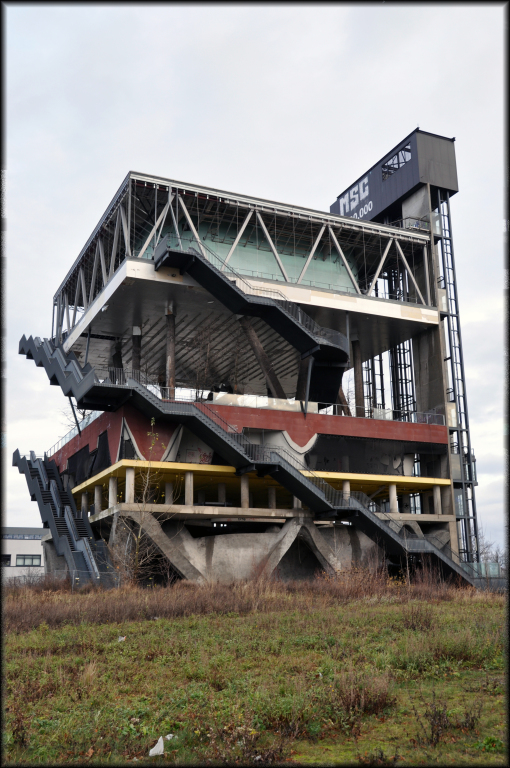
More seriously though, I am concerned that by treating the industrial era as a tainted age, we disrespect those who built and lived that age. Recognize that they were doing their best, just as we are. Again, step away from that big picture and put down that broad-stroke brush, find that those memories on the ground, the years spent on the factory floor, bring tears of joy as often as tears of sadness, just as they do for us. The capitalistic plastic skins on these architectural carcasses begin to peel back, exposed to caustic elements, to reveal a skeleton of rust, cogs, switches, dials, circuit boards and mouldy pieces of paper outlining modes of production, things to remember, forgotten Polaroids and birthday cards to the family. It’s all in there, a little package of life. And when we pass through these places, we tap into those stories and weave them into our own. This is the embodied subjective.
I refused to be ruled by fear; I will only be motivated by positivity and freedom. This is not to say I want to overromanticize the past, but that I want to make the most out of this present that I can. Life should be more than deconstruction and analysis. I can unpack my experiences and feeling about the practice, but more importantly, those experiences are creating, constructing and reinforcing brave personalities, free spirits, databases of knowledge and memory, a collective consciousness of ecstatic phenomenological wonder, of playful work that speaks volumes about culture. Industrial ruins are decaying but they’re not dead, they are landscapes filled with possibilities of wondrous adventure, peripatetic playfulness and artistic potential.
If you fall down a Parisian catacomb tomorrow, never to be seen again, what will 1) scholarship miss 2) the non-academic world miss. Meaning: what is the big contribution of your work?
Look brother if I die and don’t finish these tales of urban exploration, here are the threads, please finish it for me! Urban exploration is about experience, expression, love and creation. It is a rare instance (especially in western society today) of human beings physically going out to challenge space, to challenge control, to assert their rights to place, their rights to the city, their rights to participate in the creation of historic narratives and cultural identities. This topic is vital to our understanding of the contemporary human condition. It is so temporally and politically relevant that it threatens to implode under it’s own philosophical weight. Urban exploration is existentially reactionary, pushing against alienation, suppression, bureaucracy and overregulated existence. But it is also ecstatically playful, and by playfully pushing the boundaries of what is possible, by putting ourselves in potential danger to assert those rights, we live Hunter S. Thompson’s edgework. At play, at work, in danger, loving, bonding, challenging, and laughing, free and unrestrained, we are at our best.
What we are doing is not supposed to be possible. Most people on the anonymous city streets don’t have their gazes honed to see what we see. We are mutants, neo-sapiens. We declare that the idea of no limits to the human imagination is old news. Now we want to know the limits of human imagination physically manifested in resistance to social and cultural norms. We want to know how much bullshit we have been fed. And the sparks that come out of those clashes will give birth to new forms of being, new realms of experience. Those little beautiful demonic creations will live far longer than us.
Maps are an abstraction Adam, they are a utopic representation of nationalistic and ideological power structures which do not have a 1:1 ratio with the earth’s surface. Therefore, as Hakim Bey tells us, we have the opportunity to get into those cracks in the structure and to create Temporary Autonomous Zones of political, social and cultural insurrection. And I use that term consciously. We do not want revolution, we want to create alternative spectacles (following Debord) that are just as superfluous but that, none-the-less, cause re-analysis, confrontation and confusion. We want you to keep hitting the refresh button to see what happens next. If we are successful in realizing our personal visions, our spectacles are composed of more experience and less simulacra than those of the state, nation or culture but are just as stupid.
This is why I call us place hackers. We are the physical manifestation of the internet pirate. We are the TAZ. We have the corporeal skills of thieves amalgamated with minds molded by an internet ethos of taking what we want, when we want it. We don’t care if corporate control exists, but we assert our right to challenge or ignore it. Virtual hacking is cool but place hacking makes it core again, brachiating across scaffolding to get the shot on your Digital SLR that maximizes your flickr stats, raking in the google adsense cash and conforming to a zerowork ethos if we get pro at it. Sleep in ruins, sell your photos of disgusting shit to tourists. Rinse off in a petrol station sink and repeat. We are the nerds that finally walked away from their computers and we are behind that scaffolding covering the building you ignore everyday when you walk by it going to work, we just loved on that place like no one has in 20 years. We are psychotopological terrorists and we will shove that masterlock up your ass.
How could my interests in contemporary corporate space, networked virtual organization, and new media social activism interlace with your work?
I was talking to one of my project participants the other day while walking through a ruin that had closed down in 2003, the “newest” I had ever explored, about what will be explored from the information age. Will we find interest in exploring empty glass postmodern shells of low blue office carpet; will we photograph the little marks in the carpet where the cubicle separators used to be and get all giddy? Will we find old hard drives and hook them up marveling at the novelty of “cables” to see what was on them, infiltrating people’s left behind lives through virtual exploration? Perhaps. Certainly our children will find those places as weirdly exotic as we find the derelict art deco swimming pool. And so the torch will be passed, challenging them to find their own meaning in those remnants. I don’t know if the intersections between the past and the future have yet met in the present. Perhaps that is what we are looking for. Perhaps we could invoke that spectre.

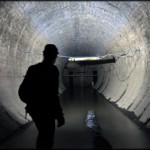






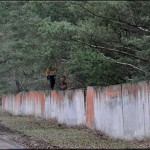
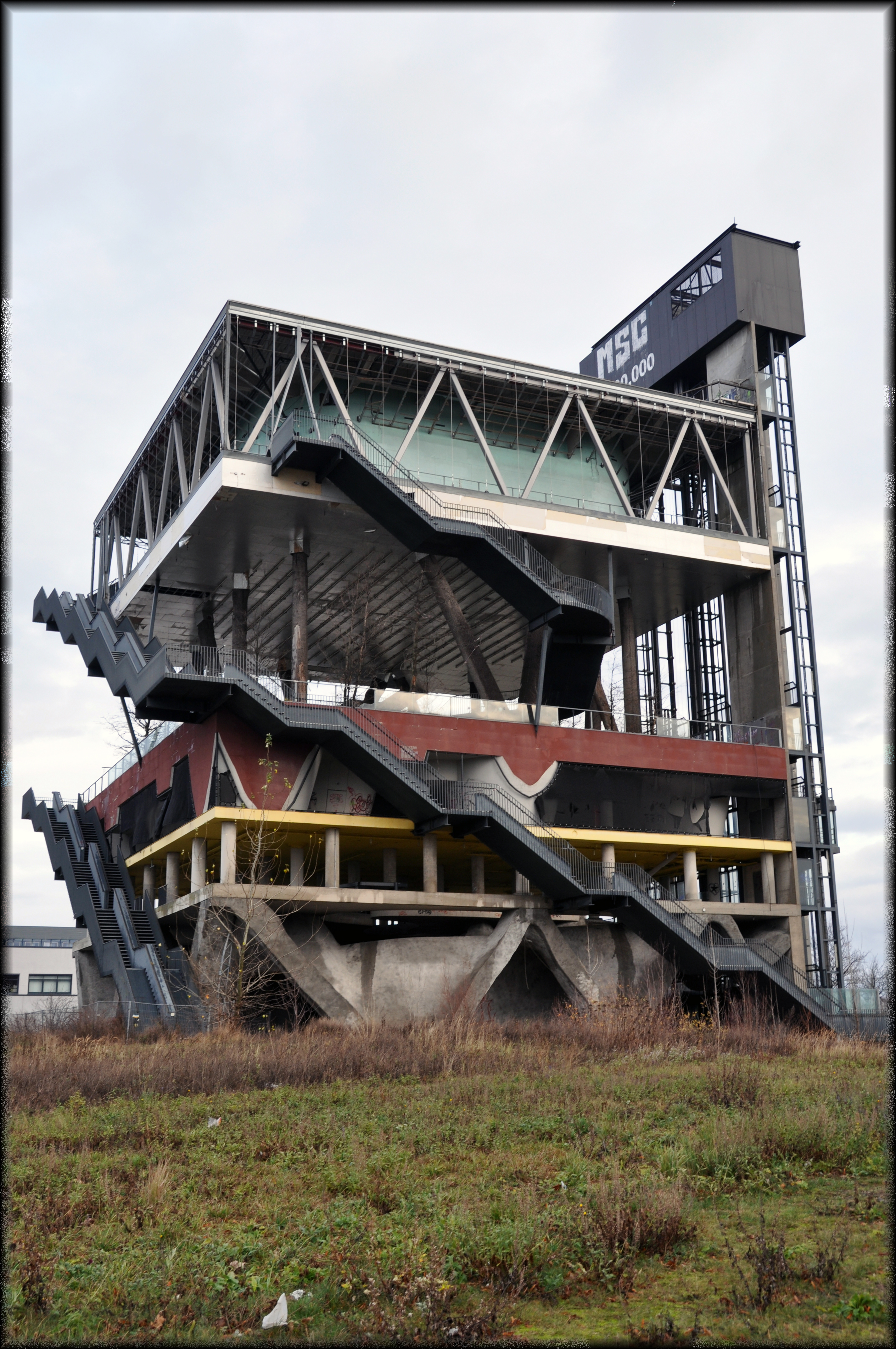











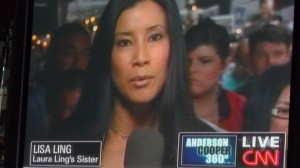 py to oblige Stelter’s creativity and I’ll accept the flattery with the imitation. Today, I will continue the analysis of this crisis in the direction of looking at the relationship between individual and institutional cultural capital.
py to oblige Stelter’s creativity and I’ll accept the flattery with the imitation. Today, I will continue the analysis of this crisis in the direction of looking at the relationship between individual and institutional cultural capital.